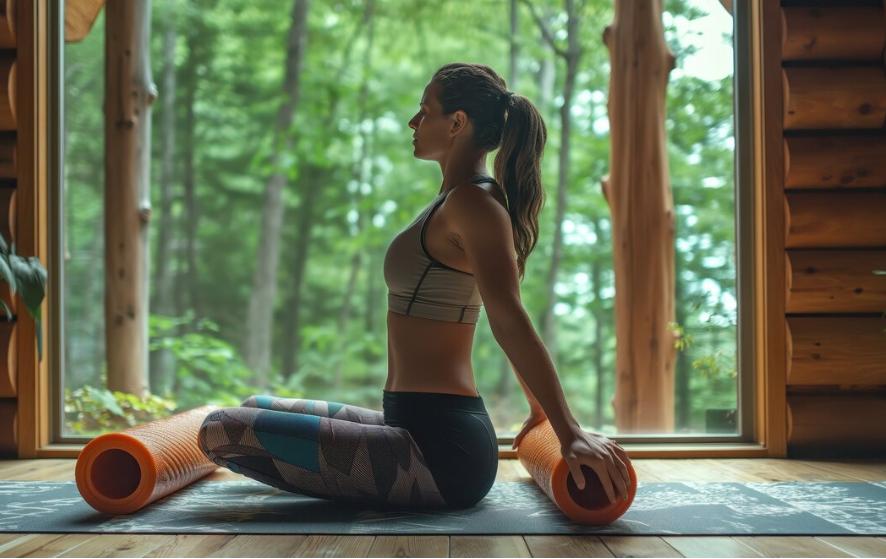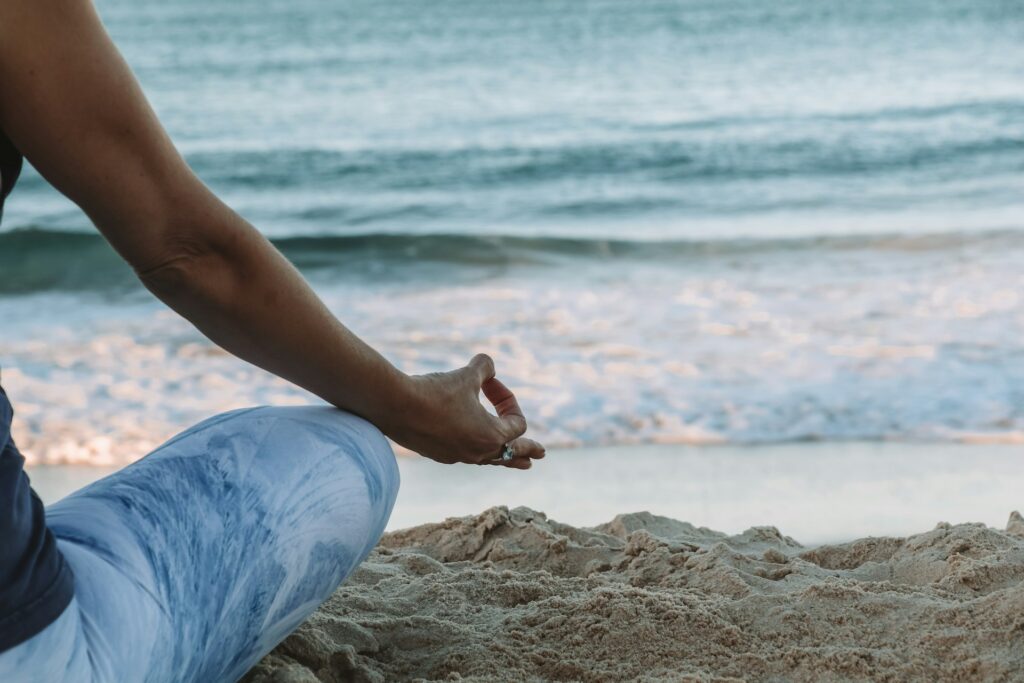Have you ever noticed how your shoulders seem to migrate toward your ears during a stressful day? Or how that knot in your neck feels like it’s been there since approximately 2019?
Your body has an excellent memory, especially when it comes to stress. Every deadline, every traffic jam, every awkward Zoom call gets filed away in your muscles like unwanted keepsakes. But what if I told you there’s a surprisingly simple way to help your body finally let go of all that stored tension? Enter meditation – not the mystical, incense-burning kind you might be picturing, but practical, science-backed techniques that work better than you’d expect.
The Real Story Behind Muscle Tension
Before we dive into solutions, let’s talk about what’s actually happening in your body. When stress hits, your nervous system doesn’t distinguish between a charging tiger and a passive-aggressive email from your boss. It responds the same way: by tightening muscles, preparing for action that never comes.
The problem? Modern life serves up stress in endless small doses rather than one big, resolvable event. So those muscles stay partially contracted, like a security guard who never gets to clock out. Over time, this creates what researchers call “chronic muscle tension” – basically, your body’s way of staying perpetually ready for trouble.
The shoulders and the neck are parts of the body that often hold a lot of tension caused by stress, which explains why so many of us feel like we’re literally carrying the weight of the world on our shoulders. Your jaw, lower back, and even your feet can become storage units for stress you didn’t know you were keeping.
Why Traditional “Just Relax” Advice Falls Short
If you’ve ever been told to “just relax” when you’re tense, you know how frustrating that advice can be. It’s like telling someone to “just fall asleep” when they have insomnia – the harder you try to force relaxation, the more elusive it becomes.
This is where meditation comes in, but not in the way you might think. We’re not talking about emptying your mind or achieving some zen-like state of perfection. Instead, the most effective approaches for muscle tension work by actually increasing your awareness of what your body is doing right now.
The Body Scan: Your Personal Tension Detective
One of the most practical meditation techniques for muscle tension is called a body scan. Think of it as a gentle inventory of how you’re feeling from head to toe – no judgment, no trying to fix anything, just noticing.
Body scan meditation involves paying attention to parts of the body and bodily sensations in a gradual sequence from feet to head, helping you become more aware of physical sensations you might normally ignore.
Here’s how it works in real life: You lie down comfortably and slowly move your attention through different parts of your body. Start with your toes – are they clenched? What about your calves? Your lower back? Most people are surprised to discover tension in places they never noticed before.
The magic happens not in forcing these areas to relax, but simply in acknowledging them. It’s like finally turning on a light in a room you’ve been stumbling around in – suddenly you can see what’s there.
Progressive Muscle Relaxation: The Squeeze-and-Release Method
Another effective approach is progressive muscle relaxation (PMR), which sounds more complicated than it is. Progressive muscle relaxation is a technique that involves systematically tensing and relaxing different muscle groups in your body.
The process is beautifully simple: you deliberately tense a muscle group for about 10 seconds, then release and notice the contrast. Start with your feet, clench them tight, then let go. Move up to your calves, your thighs, your stomach, and so on.
Why does this work? By creating deliberate tension, you’re teaching your body what release actually feels like. Many of us have been carrying low-level tension for so long that we’ve forgotten what truly relaxed muscles feel like. PMR gives you a reference point.
The Science Behind the Relief
You might be wondering if this is all just wishful thinking or if there’s actual science behind meditation’s effect on muscle tension. The research is pretty compelling. Meditation is a popular form of stress management, argued to mediate stress reactivity, and multiple studies have shown measurable physiological changes during and after meditation practice.
When you engage in mindful awareness of your body, several things happen simultaneously. Your nervous system shifts from “fight or flight” mode to a more relaxed state. Your breathing naturally deepens, which signals to your brain that it’s safe to let go of defensive tension. Blood flow increases to areas that have been chronically tight.
The study highlights the transformative potential of the MBSR program beyond short-term symptom relief, suggesting that regular practice creates lasting changes rather than just temporary relief.
Making It Work in Real Life
The beauty of these techniques is that they don’t require special equipment, perfect conditions, or hours of time. You can do a quick body scan while lying in bed before sleep, or practice progressive muscle relaxation during a lunch break.
Start small – even five minutes can make a difference. Find a comfortable position (sitting in a chair works fine if lying down isn’t practical), and begin with whatever part of your body feels most tense. Don’t worry about doing it “right” – there’s no meditation police checking your technique.
Some people find it helpful to use guided recordings initially, while others prefer to go at their own pace. The key is consistency rather than perfection. Your body learns through repetition, so a few minutes daily beats hour-long sessions once a week.
When Your Mind Wanders (And It Will)
Here’s something nobody tells you about meditation: your mind will wander, and that’s completely normal. In fact, noticing that your mind has wandered and gently bringing your attention back to your body is actually part of the practice, not a failure of it.
Think of it like training a friendly but easily distracted puppy. You don’t get angry when the puppy gets sidetracked – you just gently guide it back to where you want it to go. The same patience applies to your wandering thoughts.
Beyond the Immediate Relief
While the immediate muscle relaxation is wonderful, something deeper happens with regular practice. You start to notice tension earlier, before it becomes a chronic problem. You might catch yourself hunching your shoulders during a difficult conversation and naturally let them drop. You become your own early warning system.
Many people also find that as their physical tension decreases, their mental stress becomes more manageable too. It’s hard to feel completely overwhelmed when your body is relaxed – they influence each other in both directions.
Building Your Personal Practice
The most sustainable approach is to find what works for your life rather than trying to force yourself into someone else’s routine. Maybe you’re a morning person who enjoys a body scan with your coffee. Maybe you prefer unwinding with progressive muscle relaxation before bed. Some people find brief check-ins throughout the day more helpful than longer sessions.
Pay attention to when you tend to accumulate the most tension. Is it after meetings? During your commute? Right before dinner? These are perfect opportunities to practice a quick release technique.
The Ripple Effect
As you become more skilled at recognizing and releasing physical tension, you might notice improvements in other areas too. Sleep often improves when your body isn’t holding onto the day’s stress. Energy levels may increase when you’re not constantly working against tight muscles. Even your mood might lift as your body feels more comfortable.
Remember, this isn’t about achieving some perfect state of relaxation – it’s about developing a healthier relationship with the tension that naturally arises in daily life. Just like you brush your teeth to maintain oral health, these techniques can become part of maintaining your overall physical comfort.
The goal isn’t to never feel tense again (that would be unrealistic), but to avoid carrying yesterday’s stress into today, and today’s stress into tomorrow. Your muscles will thank you for finally giving them permission to let go.

Disclaimer: This article is for informational and educational purposes only and is not intended as health or medical advice. The information provided should not replace professional medical consultation, diagnosis, or treatment. Individual experiences with meditation and relaxation techniques may vary. If you have chronic pain, medical conditions, or concerns about physical symptoms, please consult with a qualified healthcare provider. The techniques discussed are general wellness practices and are not intended to diagnose, treat, cure, or prevent any medical condition. Always seek the advice of your physician or other qualified health provider with any questions you may have regarding a medical condition.
Sources: Information in this article is based on research from various wellness and mindfulness resources including HelpGuide.org, Berkeley’s Greater Good Science Center, and published meditation research studies. Specific techniques mentioned are widely practiced relaxation methods documented in wellness literature.



